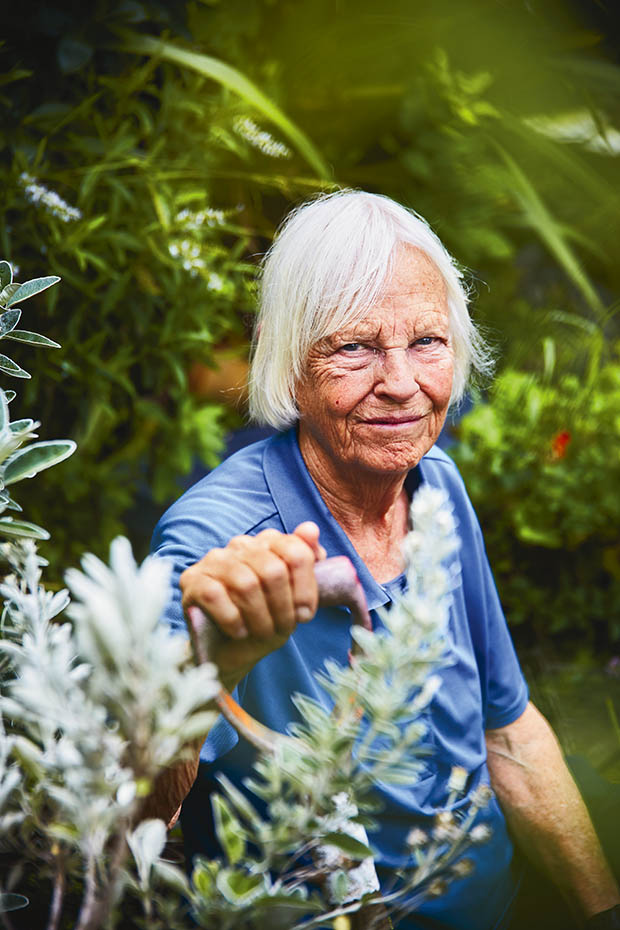Environmental legend Molly Melhuish wants New Zealand to fully embrace the tiny forest movement

Tiny forest plantings are gaining international momentum and being promoted by one of the country’s most enduring eco-warriors.
Words: Kate Coughlan
There’s a tiny ray of sunshine amid the gloomy predictions that all is lost in the fight to save this unique planet called Earth. Hope shines through a dense stand of trees heaving with life and illuminating a banner. It reads, “Tiny Forest Movement”, and proclaims that healing the planet is possible in small spaces. Tiny forests help cool cities, increase biodiversity, improve human health and teach children the importance of nature in areas as small as an unused car park, an excess playground space, an old tennis court or a roadside berm.
What is important is the methodology. Set out according to the specifications of the Japanese botanist Akira Miyawaki, tiny forests differ from forest restoration projects, requiring six times as many plants as typical forest restoration and intensive soil preparation. Scientist Molly Melhuish has studied the work of Professor Miyawaki (who died in 2021) and his achievements.
“He was an expert botanist and observed the beauty, health and biodiversity of dense forests around sacred Japanese temples and shrines, learning from these ancient mini-forests and replicating the method initially at his university campus in Yokohama.
“Then Nippon Steel used the same process to plant pocket forests around its steel mills. The idea spread throughout Southeast Asia to several South American countries, Europe and the United States.”
Molly says that as long as Miyawaki’s method is properly followed, it works in every climate and soil type. “Planting multiple species closely together in soil prepared in a special way allows the development of long-lasting native forests with high levels of biodiversity and interlocked root and branching systems able to withstand tsunamis.”
In the Netherlands, more than 200 Miyawaki Tiny Forests have been planted, mostly in conjunction with schools connected with the academic syllabus. So far, about 10,000 Dutch children have taken part.
Molly’s goal is to establish a national trust to promote the establishment of tiny forests, either as part of a school curriculum or as a Māori-centered biodiversity initiative. Children would have a level of appropriate interaction — from being junior forest rangers, enjoying the forests as play areas to complex learning projects, such as mapping biology and measuring carbon capture. She sees this as vital education for the ecosystem protectors of the future.
“Ideally, I’d like to see these micro-forests developed in our most deprived areas, where they would have the most impact on the health of our children. It is well-established that our microbiome — the microbes living within and on our bodies — is of significant benefit to human health and that a diversity of microbes in areas such as tiny forests alleviates our susceptibility to auto-immune diseases, allergies, asthma and irritable bowel syndrome. Wealthy people can drive to the bush to go walking or swim in the ocean and, in so doing, access a diversity of microbes not readily available to everyone.
“This is known as the holobiont theory, which basically means the more exposed humans are to healthy, diverse ecosystems, the better the human health.” Molly is now working with locals to collect seeds and grow eco-sourced plants to make tiny forest planting affordable. She is also helping a Wainuiomata marae secure rights to cultivate land using the tiny forest method.
MOLLY’S LIFE IN ADVOCACY
Molly Melhuish has been battling to save the planet since Noah loaded his ark. Beginning in the late 1970s, the American-educated scientist has held the flame of informed reason to the butt of New Zealand leaders. In the 1980s, new energy sources were eagerly sought under the Think Big philosophy to minimise the economic shock of imported oil prices. Molly’s concern was the harm to nature of profligate energy consumption, particularly of fossil-based fuels. She was successful in helping people understand the importance of energy conservation and the need for electricity regulation for public and private benefit. But she failed to make any impact at all on electricity regulation itself and was eventually removed from all regulatory advisory groups. And the Think Big energy projects went on unchecked.
Today, Molly is still in York Bay on the Eastbourne side of Wellington Harbour, her home since 1964, focusing on human health and that of the planet, directing action to heal the land through native forest and swamp restoration. She works in a plant nursery growing eco-sourced seedlings and in the bush on the steep hills behind York Bay, laying waste to climbing asparagus. She’s 80-plus years old, and all the weed-busting, nursery work and planting are health-promoting activities she can pursue whether she feels fit or less so.
Love this story? Subscribe now!
 This article first appeared in NZ Life & Leisure Magazine.
This article first appeared in NZ Life & Leisure Magazine.
